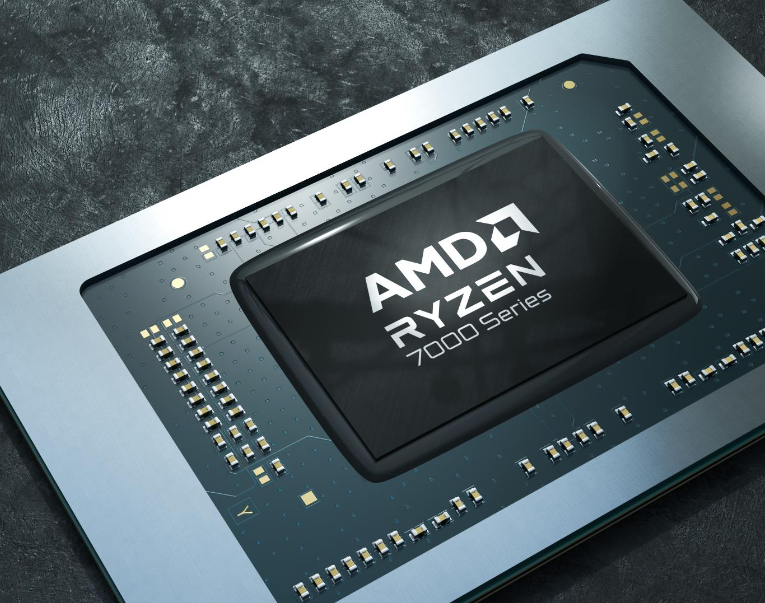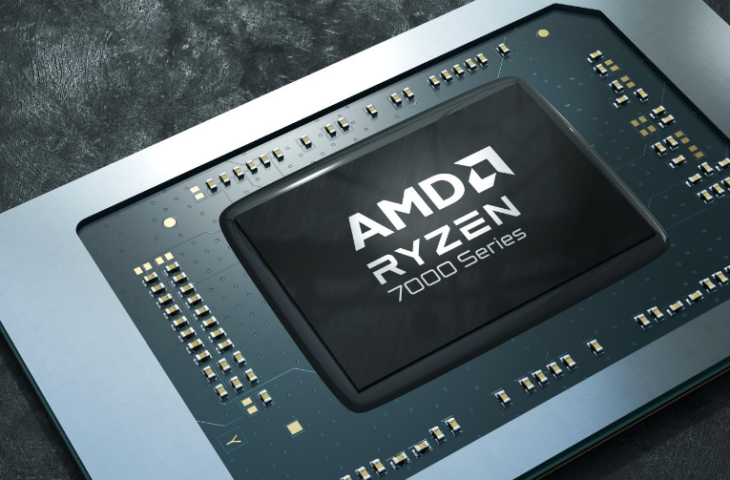AMD brings lightweight Zen 4c core to the laptop: P and E cores, but different
- November 3, 2023
- 0
AMD is launching two new processors that include not only classic Zen 4 cores, but also Zen 4c cores. They are similar but more economical. AMD is also
AMD is launching two new processors that include not only classic Zen 4 cores, but also Zen 4c cores. They are similar but more economical. AMD is also


AMD is launching two new processors that include not only classic Zen 4 cores, but also Zen 4c cores. They are similar but more economical. AMD is also jumping on the Big.Little bandwagon.
AMD is launching two new laptop processors in the Ryzen 7040 portfolio: the Ryzen 5 7545U and the Ryzen 3 7440U. Both chips not only have classic Zen 4 processor cores on board, but also Zen 4c cores. They are 35 percent smaller and use less than traditional cores. Architecturally, the differences aren’t huge, but AMD has optimized the Zen 4c for high on-chip density and maximum throughput. In other words: There are more Zen 4c cores on one chip than Zen 4 cores, while the temperature remains within limits.
AMD first introduced Zen 4c in its Bergamo data center chips. The AMD Epyc 9754 has 128 Zen 4c cores on board: ideal for efficiently running cloud-native workloads. But the Zen 4c’s properties are also interesting in the thermally restrictive casing of a laptop.
By integrating the cores into the new chips, AMD aims to offer more instructions per cycle and more performance than comparable chips while keeping the TDP below 15 watts. For entry-level laptops, AMD can offer an economical chip that is still more than powerful enough for office work, but is easy to cool and the CPU is also easier on the battery. On the other hand, the CPUs perform worse than equivalents with all regular Zen 4 cores under heavy workloads that require high clock speeds.
AMD is following Intel here, which has been combining P (Performance) and E (Efficiency) cores on one CPU since Alder Lake. Intel, in turn, used ARM’s Big.Little configurations, which placed heavy and light Cortex cores on one chip. The advantage is similar in all cases: cores optimized for lower consumption can complete lighter tasks more efficiently, while powerful cores are available even when a higher clock frequency is important.
There is a big difference between AMD’s implementation and Intel’s: Intel’s E-Cores are derived from the Atom and Celeron architecture and do not support multithreading. As mentioned, Zen 4c is simply a variant of Zen 4 and handles two threads per computer. In theory, this guarantees better software support. Intel faces some challenges in combining the two architectures on one chip.
Both new chips are based on the Phoenix 2 chip, which combines Zen 4 and Zen 4c with integrated graphics capabilities from the Radeon 740M, but without the AI accelerator found in other current AMD laptop chips. The Ryzen 5 7545U contains a full Phoenix 2 chip and consists of two Zen 4 cores and four Zen 4c cores. The Ryzen 3 7440U is a stripped-down version with one Zen 4 core and three Zen 4c cores.
The new CPUs are important for AMD’s portfolio. Intel and ARM before it have already shown that there is added value in combining efficient cores with more performance-oriented cores. A large part of the workloads work without problems with a slightly more economically optimized core. Anyone who drives to the supermarket more often than races around the Francorchamps racetrack is better off with a Citroën Berlingo than with a Ferrari LaFerrari: With different cores on one chip, the manufacturers supply the right tool for this.
This is offset by a lack of transparency. Anyone who prefers high-frequency cores, for example for rendering videos, will not see any difference on paper between a new 6-core Ryzen 5 7545U and an existing Ryzen 5 7640U with the same number of cores and the same maximum clock speed. However, the second will perform better as it has regular Zen 4 cores throughout that can handle higher frequencies.
AMD does not provide a clear identifier to distinguish chips with and without Zen 4c. All the numbers in the type number of an AMD CPU have a meaning (which is difficult for a layperson to decipher), but there is not even an indicator of this new difference.
Source: IT Daily
As an experienced journalist and author, Mary has been reporting on the latest news and trends for over 5 years. With a passion for uncovering the stories behind the headlines, Mary has earned a reputation as a trusted voice in the world of journalism. Her writing style is insightful, engaging and thought-provoking, as she takes a deep dive into the most pressing issues of our time.